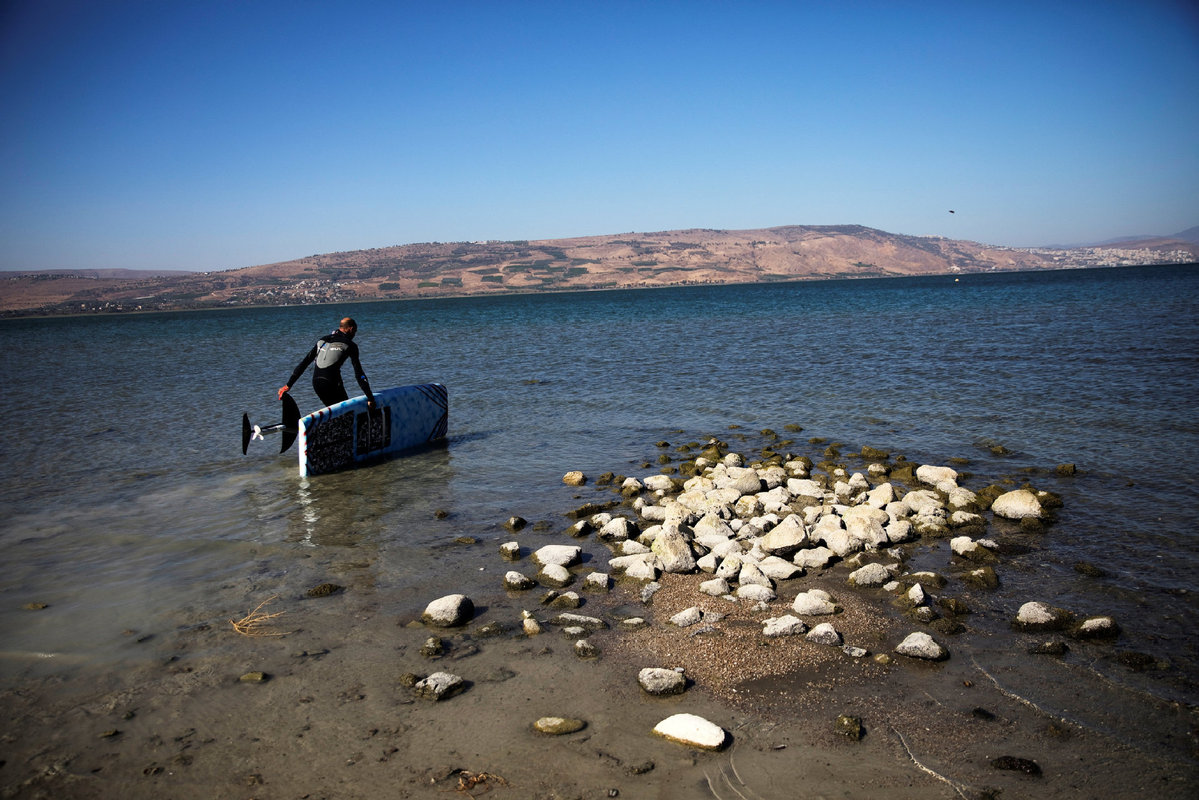Shrinking lake has some seeking miracle


EIN GEV, Israel - It was not so long ago when swimmers at Ein Gev would lay out their towels in the grass at the edge of the Sea of Galilee.
Today, they put up their parasols 100 meters further down, on a sandy beach that has appeared due to the shrinking of the iconic body of water.
"Every time we come, we feel an ache in our hearts," said Yael Lichi, 47, who has been visiting the famous lake with her family for 15 years.
"The lake is a symbol in Israel. Whenever there is a drought, it is the first thing we talk about."
In front of Lichi, wooden boats with pilgrims aboard navigate the calm waters, among groups from across the world that visit.
The Sea of Galilee, where Christians believe Jesus walked on water, has been shrinking for years, mainly due to overuse, and environmentalists are raising the alarm.
Plans are being devised to resuscitate the freshwater body known to Israelis as the Kinneret and to some as Lake Tiberias.
For Israel, the lake, which covers some 160 square kilometers, is vital, having long been the country's main source of water. Israeli newspaper Haaretz provides its water level daily on its back page.
Its shrinking has been a source of deep concern. When two islands appeared recently due to falling water levels, it received widespread attention in the Israeli media.
Since 2013, "we are below the low red line" beyond which "salinity rises, fish have difficulty surviving and vegetation is affected", said Amir Givati, hydrologist at Israel's water authority.
The level is only around 20 centimeters above the record low plumbed in 2001 - except, at that time, 400 million cubic meters a year were pumped out for irrigation.
"This year, we only pumped 20 million cubic meters, but the lake is in a very bad state," said Givati.
Added to that is the 50 million cubic meters Israel sends to neighboring Jordan as part of peace agreements.
'Valley of bananas'
Its unique characteristics go beyond its religious significance. It is 200 meters below sea level, located north of the Dead Sea, the River Jordan between them. Both the Dead Sea and the Jordan have also suffered from overuse.
At the water ministry, blame for its condition is placed on five years of drought. But "climatic factors alone are inadequate to explain the record shrinkage of the Sea of Galilee", wrote Michael Wine, Alon Rimmer and Jonathan Laronne, researchers at Israel's Ben Gurion University.
Irrigated agriculture, pumping and diversions are the main culprits, they said in an analysis.
Farmers in the region rely on rivers that provide 90 percent of the lake's input.
Dozens of pumps remove nearly 100 million cubic meters each year from those sources, whose flow has decreased and is no longer enough to supply the lake, says the researcher.
Several kilometers from the beaches at Ein Gev, at the foot of rocky hills, immense nets cover banana trees whose leaves wilt with the surrounding dry vegetation.
"We call it the valley of bananas," said Meir Barkan, tourism director for the Ein Gev resort.
"When they began planting trees, there was no water problem and the banana is the only fruit that you harvest year-round."
AGENCE FRANCE-PRESSE



































